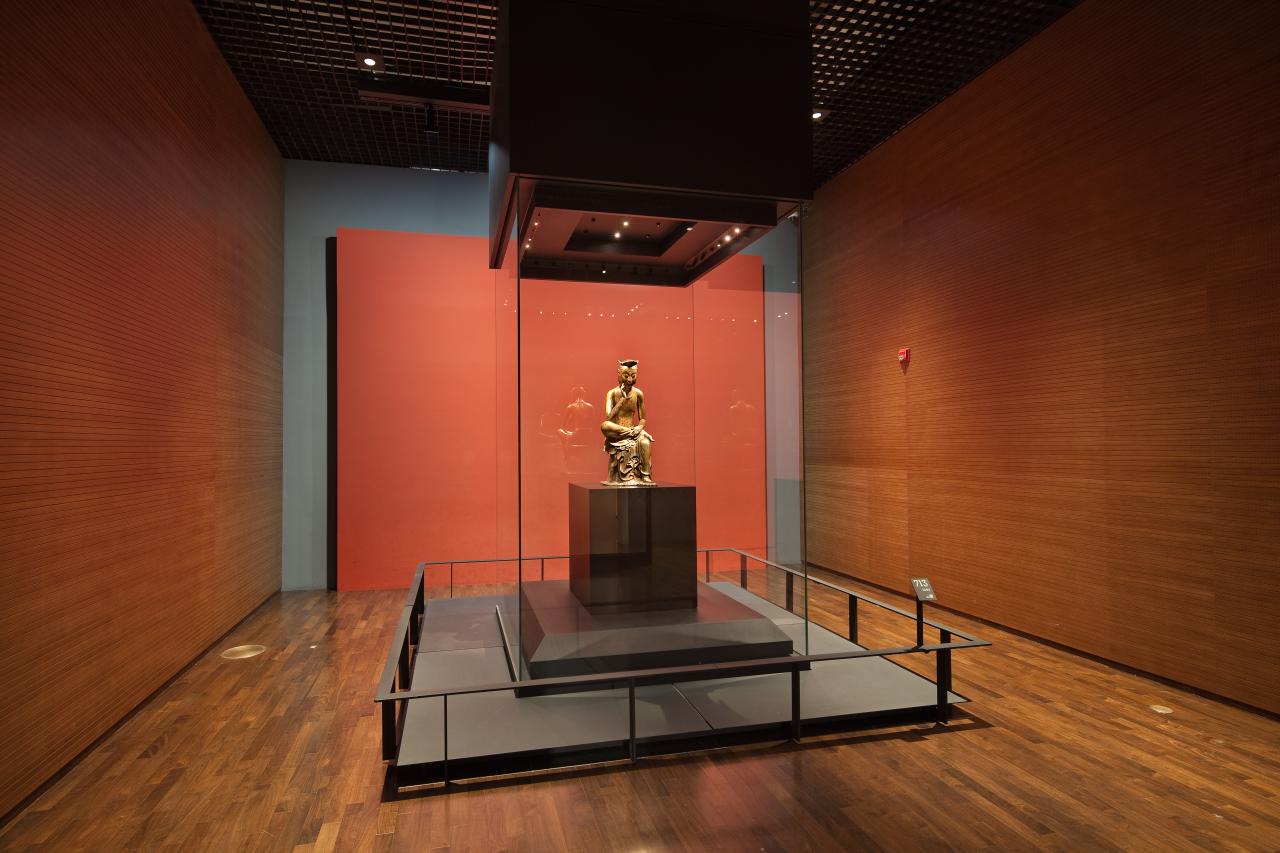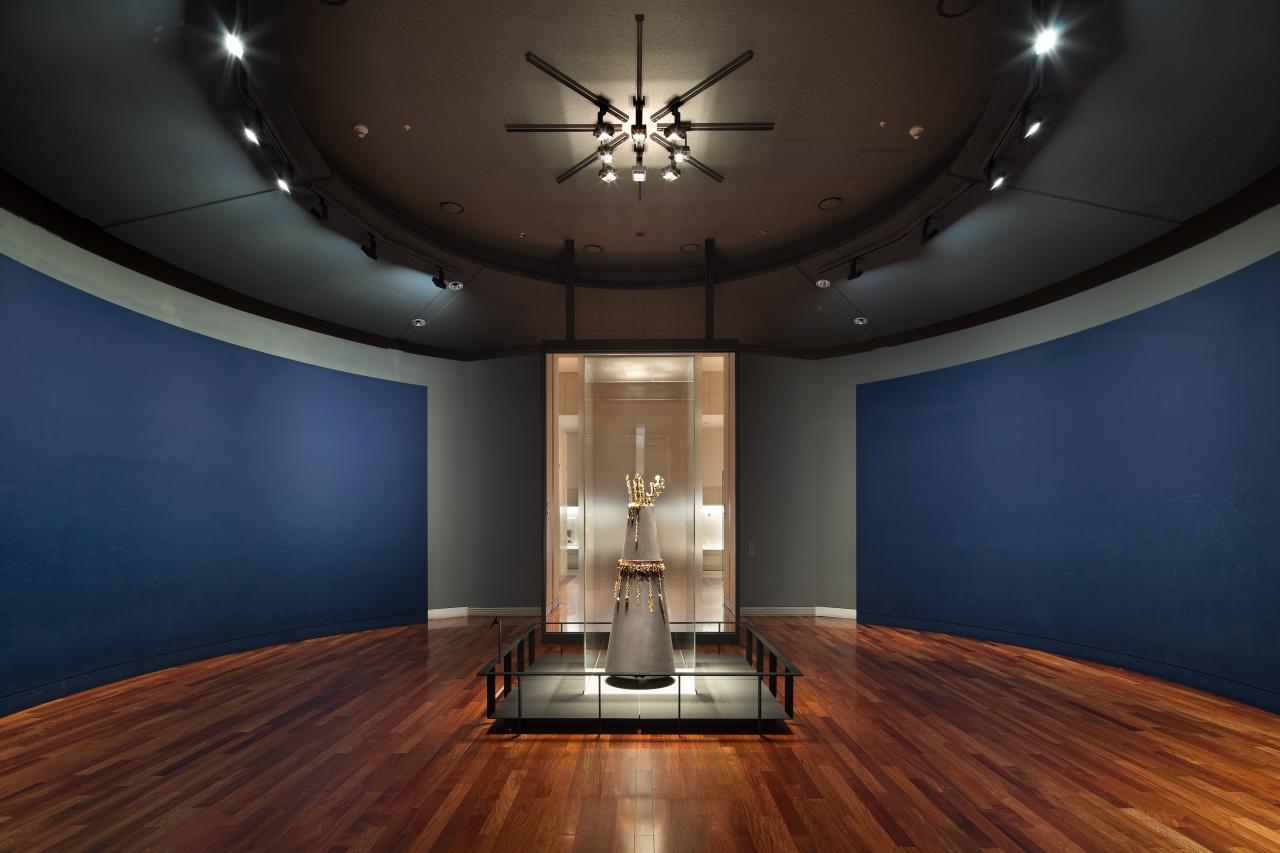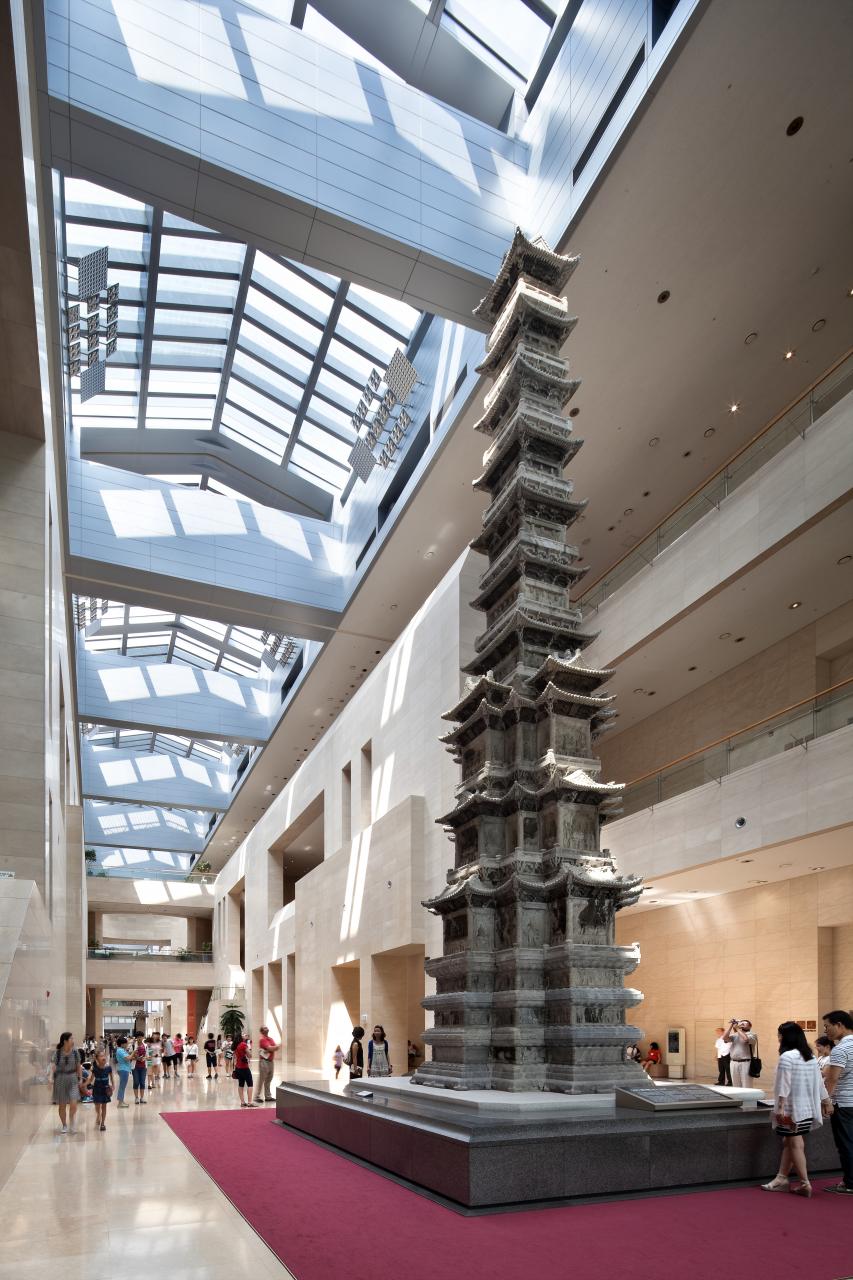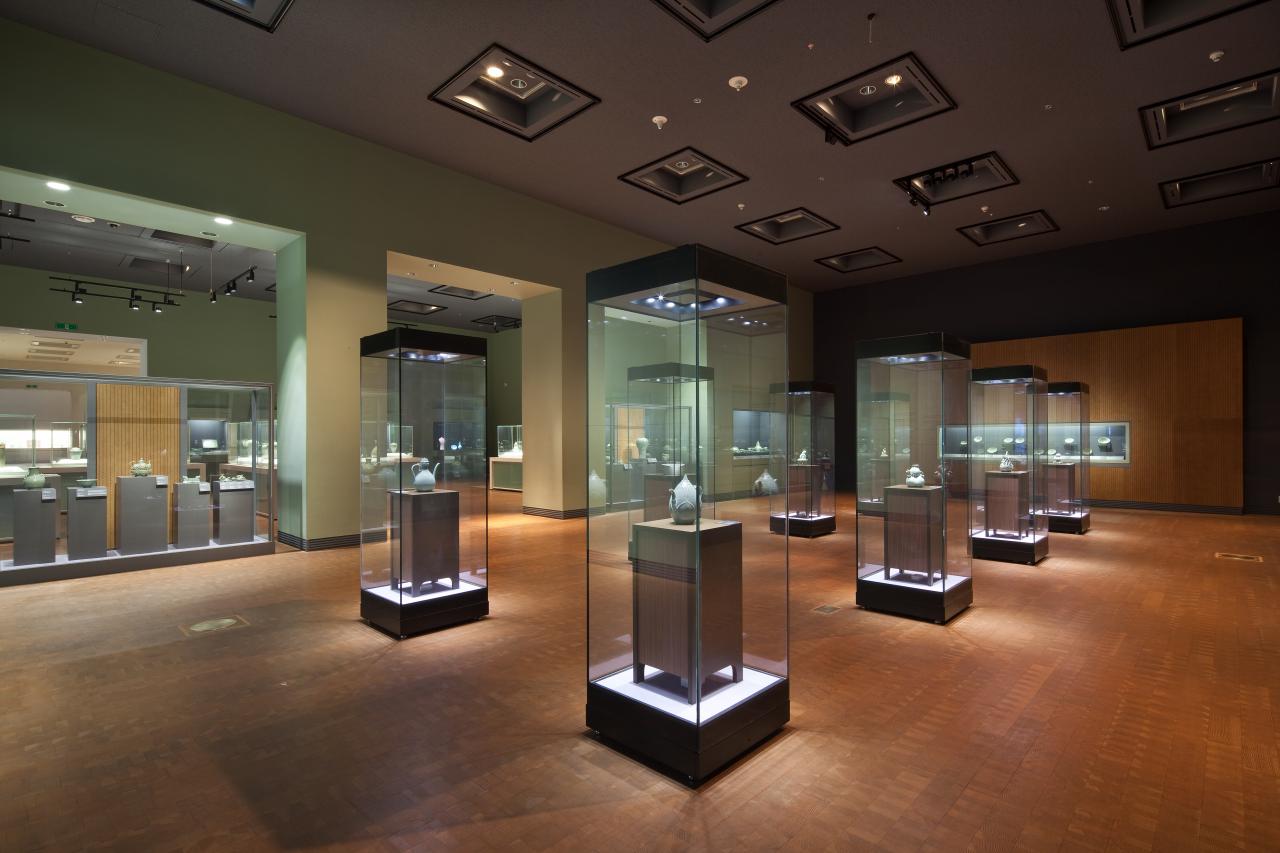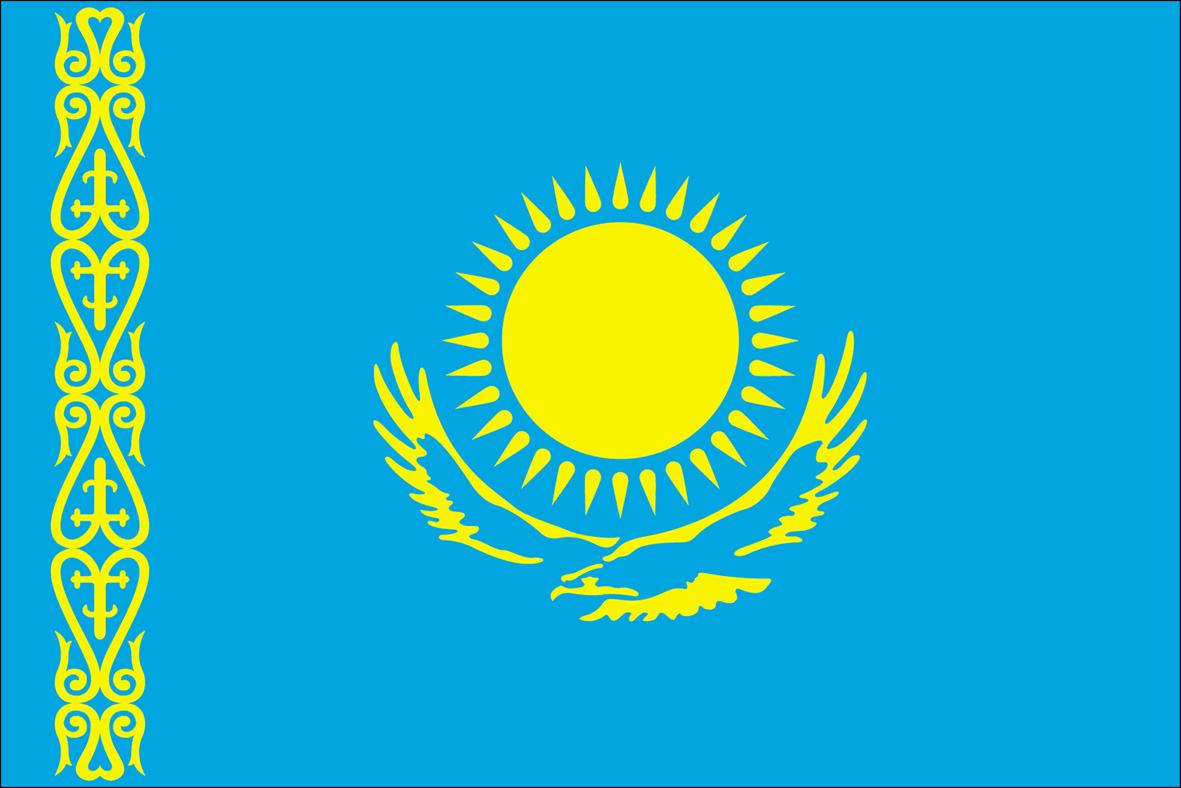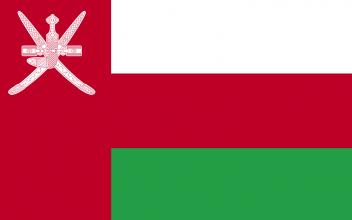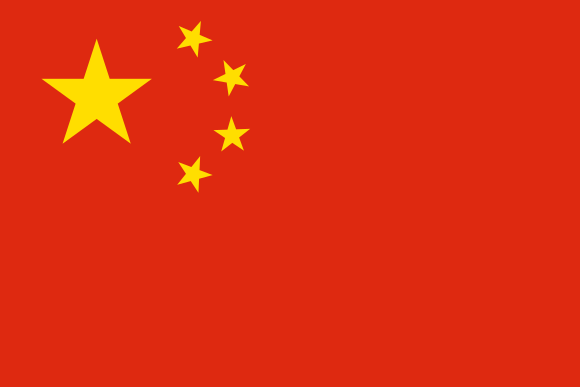National Museum of Korea
© The National Museum of KoreaThe National Museum of Korea is the most representative and extensive museum in Republic of Korea. The museum holds an immense collection: it has more than 310,000 historically valuable and highly aesthetic relics ranging from the Paleolithic Age to the early 20th century, and more than 12,000 masterpieces of its collection are always on display in its permanent exhibition hall.
The museum has six galleries: Prehistory and Ancient History, Medieval and Early Modern History, Donated works, Calligraphy and Painting, Asian Art, and Sculpture and Crafts Galleries. Visitors can appreciate its vast collection; numerous national treasures of Korea are exhibited including Pensive Bodhisattva (a Korean National Treasure), Goryeo Celadon Openwork Burner, Ten-Story Pagoda from Gyeongcheonsa Temple Site, and Gold Crown from Silla. The Asian Gallery is designed for a better understanding of Asian culture; it presents masterpieces from diverse Asian countries. The collection shows unique characteristics of each country as well as universality.
The National Museum of Korea was established in 1945. In 2005, the museum extended and reopened on a site of 307,227㎡ (building area: 45,438㎡) in Yongsan, Seoul. Since its rebirth as a “cultural complex,” the National Museum of Korea not only to preserves and exhibits precious relics, but also provide various educational programs and cultural events.
The National Museum of Korea has a number of important cultural materials related to Silk Road (both land and maritime) from Central Asia, East Asia, and Korea. In particular, its unique collection of Sinan Undersea Relics which is a valuable source of information for study of ancient trade between China, Korea and Japan. A sunken Chinese trading ship was discovered in 1975, in the Korean southwest coast near Sinan, Jeollanam-do Province. The ship, carrying trade goods produced on orders from the Kyoto area, sank on its way to Japan from Ningbo in Zhejiang Province, China in 1323. About 30,000 maritime Silk Roads objects were excavated; they are 14th century Chinese goods, including celadon wears, coins, metal artifacts, medical artifacts, and many other types of objects.
In addition, in the Prehistory and Ancient History Gallery, there are many Silk Roads related artifacts from the Silla Kingdom (57 BCE – 676 CE). The Silla culture had international aspects, including overseas exchange, as evidenced by these foreign artifacts excavated from the Gyeongju region, as well as traces of western culture found in burial mound figures. For example, some glass objects unearthed from the Hwangnamdaechong Tomb exhibit great similarity with ancient Roman glass vessels in terms of their shapes and the techniques used to manufacture them, suggesting that they arrived in Silla via China through the network of land and sea routes now known as the Silk Roads.



